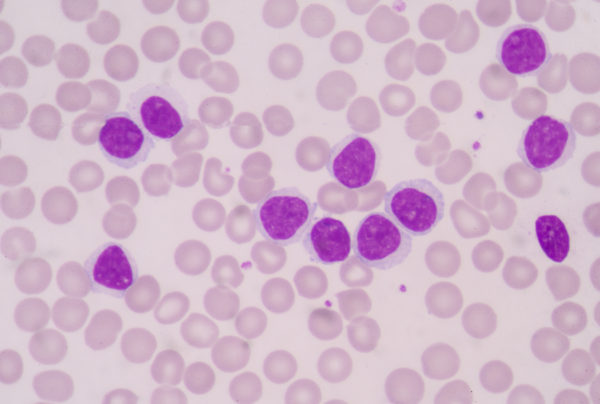What is Chronic Myelogenous Leukemia (CML)? As the name suggests, CML is a type of leukemia that affects white blood cells and typically targets adults and the elderly. CML is a rare form of cancer that influences approximately one to two of every 100,000 individuals. Although not a hereditary disease, the cancer is linked to a genetic abnormality that occurs spontaneously in the form of a chromosome. However, what exactly is this chromosome, and what are the current treatments to combat it?
Although CML was first discovered in the late 1800s, further research and treatment options came to light with the discovery of the Philadephia chromosome in 1960. CML is linked to the Philadelphia chromosome, which appears in approximately 95% of people who have the disease. The chromosome forms when DNA exchange and fusion occurs between the otherwise normal BCR (chromosome 22) and ABL (chromosome 9) gene, creating an abnormal BCR-ABL gene. Thus, the BCR-ABL gene fosters a surplus of white blood cells and immature stem cells called blasts to displace red blood cells and platelets. Consequently, normal cells transform into CML cells.
Image source: Cultura RF/Michael J. Klein, M.D.
The unregulated growth and division of the leukemia cells accumulates in the bone marrow and the blood, leading to symptoms such as night sweats, weakness, fatigue, weight loss, and bone pain. Ultimately, the leukemia can be diagnosed by a bone marrow biopsy that searches for the Philadelphia chromosome through blood work that shows high white blood cell counts and by the patient’s symptoms.
Treatment for the disease began in the 1990s with a pioneer chemotherapy oral medication known as Gleevec, which helps control leukemia cell growth. Gleevec serves as a front line therapy treatment for individuals who are first diagnosed with CML, improving the patient’s life quality and survival rates with a single pill. According to the American Cancer Society, the five-year survival rate for CML patients has doubled over the past 20 years, from 31% in the early 1990s to 63% for patients diagnosed from 2005 to 2011.
However, some patients with CML can develop a resistance to Gleevec. This led to the development of novel medications, including Tasigna and Sprycel, that operate on different sites of the BCR-ABL gene. The goal of the chemotherapy medication is to reach complete cytogenic response, which is a stage where the Philadelphia chromosome disappears and stops creating leukemia cells. Research trials show that approximately 98% of individuals on Sprycel and 96% of individuals on Tasigna reach complete cytogenic response. Once estimated at a survival rate of less than five years, innovative chemotherapy medications have started allowing patients to live a normal life span and helping target a larger variety of genetic variations causing CML.
Featured Image Source: toeytoey – stock.adobe.com










